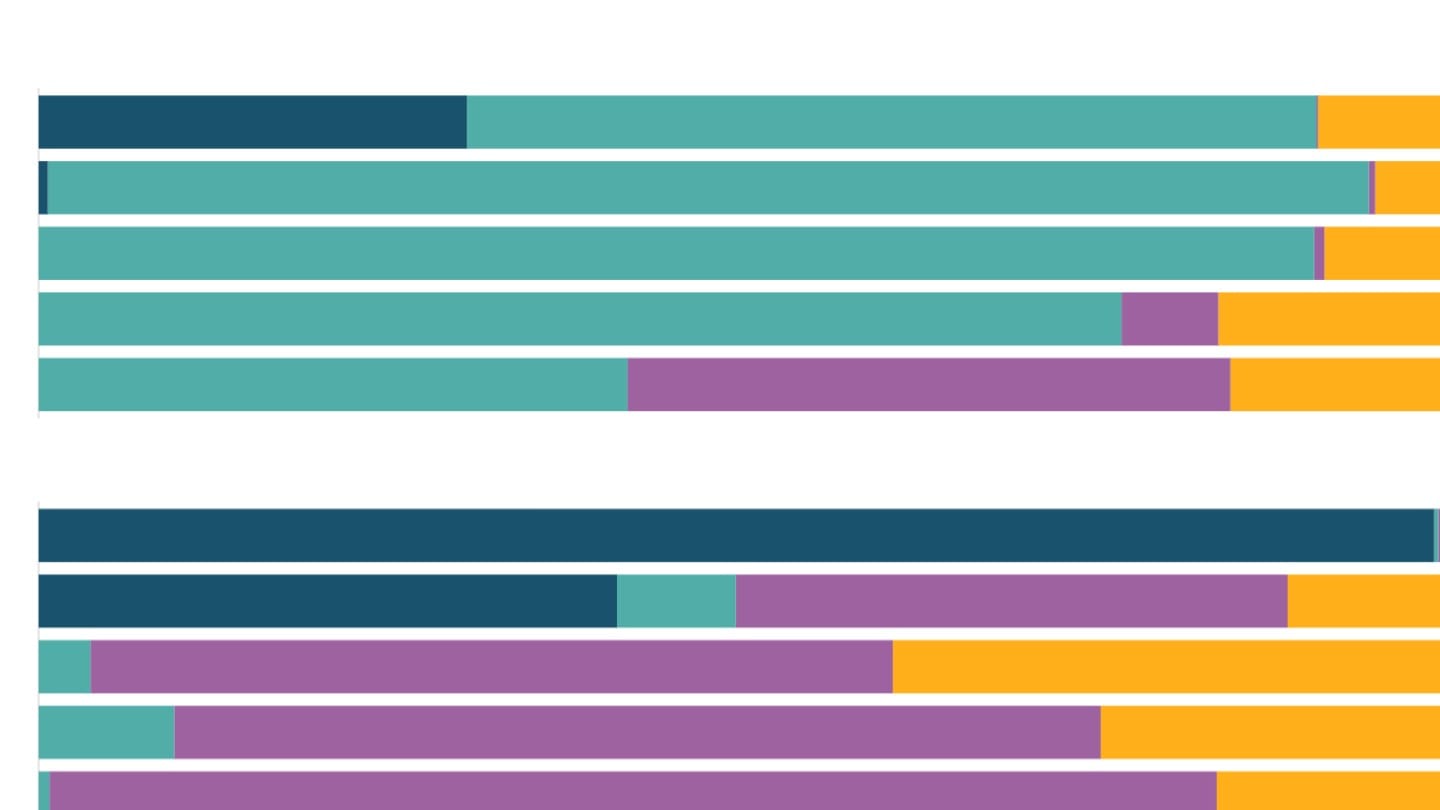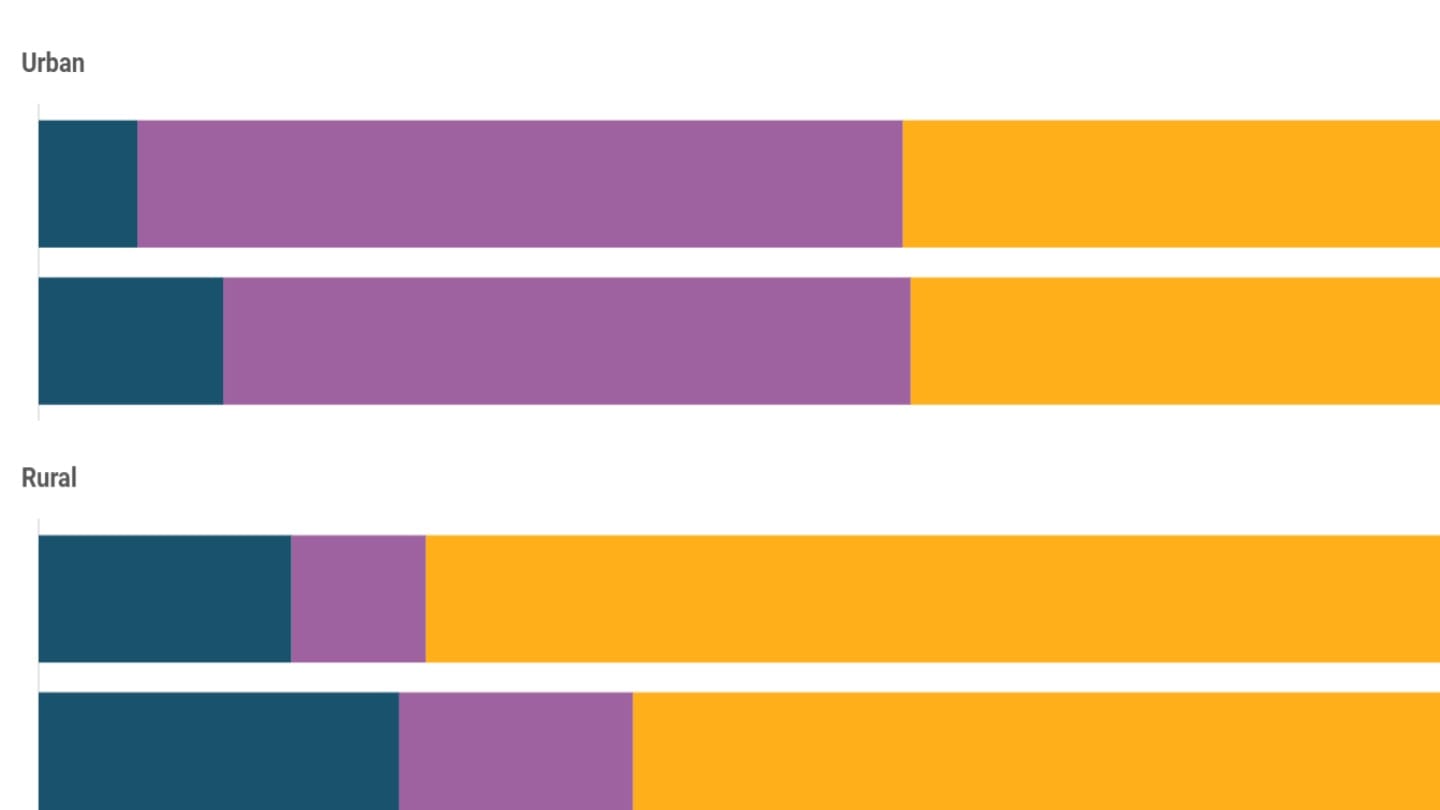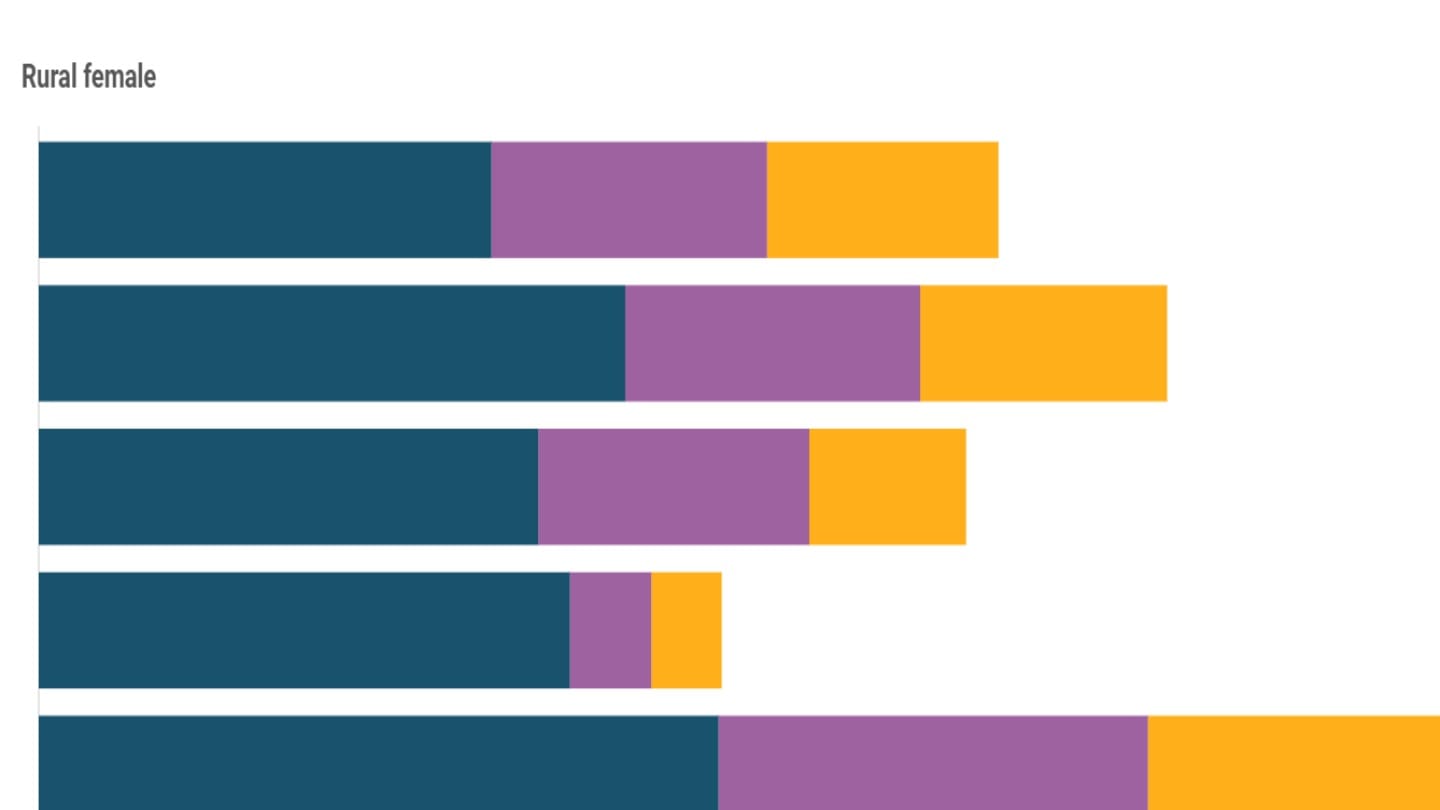Women in manufacturing
The share of women in manufacturing jobs in India has risen, propelled by the apparel and textile sectors. Yet, women's manufacturing jobs are more precarious and secure jobs are relatively rare.
India's manufacturing sector is vital to its non-farm economy and employs about 68 million workers. More than one-third of these manufacturing workers, or nearly 23 million workers, are women.[1]
Despite these large numbers, women's representation in the sector remains lower than in many Southeast Asian countries. In Vietnam and Thailand, for example, women make up nearly half the manufacturing workforce.[2]
Growth in women's participation in manufacturing
While there are more male than female workers in all sectors of the economy, the share of women workers in some sectors has grown.
Agriculture has always seen a greater representation of women workers than other sectors, and this share has only risen. The share of women workers in the services sector is also growing steadily.
Manufacturing, which employs roughly one in ten workers in India - a share that has remained largely unchanged since the 1970s - is also seeing a rising share of women workers over time.
Labour force participation among women fell in the early 2000s and 2010s, and recovered over the last five years. The manufacturing sector reflected a similar trend of fall and rise in the share of women workers over this time period. In 2000, under a quarter of manufacturing workers in India were women; now they make up more than a third.
The share of women in organised manufacturing in factories, however, is much lower. As of 2023, Indian factories employed about 7 million men and just 1.5 million women.[3]
What do women in manufacturing do?
Most women in manufacturing are concentrated in just a few sectors. Four broad sectors - apparel, textiles, tobacco, and food products - together employ 78% of all women working in this field. In fact, more than half of all women in manufacturing work in just two activities within these sectors: custom tailoring (which is an activity within apparel manufacturing) and bidi production (within tobacco)[4].
The apparel and textile manufacturing sectors have seen rapid growth in the past few years. The manufacture of apparel accounted for just 6% of all manufacturing jobs in 2000.[5] By 2024, this rose to 22%. Simultaneously, the share of women in this industry has increased from under 25% to 55% during the same period. Custom tailoring is the most common activity among women today; one in three women in the manufacturing sector in India works as a tailor.
The apparel, textile, and tobacco industries are heavily feminised. In tobacco manufacturing, 93% of the workers are women. In apparel manufacturing, the share is 65%, and in textiles, it is nearly half. But in all other manufacturing sectors, women make up less than a third of the workforce.
Women in manufacturing in Indian states
Some states have a much higher share of women in the manufacturing workforce proportionate to men. In Telangana, and in northeastern states like Arunachal Pradesh, Manipur and Mizoram, over half of manufacturing workers are women.
In Odisha, West Bengal and Andhra Pradesh as well, women make up around 45% of the sector. Meanwhile, Delhi, Haryana and Goa have some of the lowest shares of women in manufacturing.
In most parts of the country, most women in manufacturing work in textiles and apparel. However, there are a few exceptions.
Tobacco manufacturing, specifically bidi-making, is the second largest employer of women in manufacturing after apparel, and is concentrated in a handful of states. West Bengal alone employs 40% of all women working in tobacco manufacturing. Telangana is another state with a high share of women in tobacco manufacturing; over half the women employed in manufacturing in the state are involved in tobacco production. Jharkhand and Madhya Pradesh show a similar pattern, where nearly two in five women in manufacturing work in tobacco-related jobs.
Other states show different patterns. In Goa and Sikkim, a significant share of women in manufacturing are employed in the pharmaceutical industry. In Meghalaya and Kerala, food processing is also a major employer for women. In Chhattisgarh, nearly half of all women working in manufacturing are engaged in brick production, which falls under the category of "manufacture of non-metallic mineral". In Delhi nearly 25% women work in the manufacture of vehicles and transport equipment.
Within organised manufacturing in factories, two-thirds of all female factory workers are concentrated in three peninsular states of Tamil Nadu, Karnataka and Andhra Pradesh.[6]
Working arrangements of women in manufacturing
In labour statistics, jobs are classified as salaried, casual or self-employed. While salaried employees have relatively more stable jobs and are paid usually at monthly intervals, casual workers are typically paid on a daily or periodic basis for work on someone else's farm or business. The self-employed, meanwhile, run their own farm or non-farm enterprise, or practice a trade or profession, either independently or with family members.[7]
Over three out of five women working in manufacturing are self-employed. For men, the figure is much lower, at one in four.
Although the share of salaried jobs in manufacturing has increased for men over the years, women have seen very little growth in salaried manufacturing jobs, with the bulk of the increase coming from self-employment in manufacturing.
In fact, within apparel manufacturing, where most women in manufacturing work, the share of self-employed women has gone up from 46% in 2000 to 63% in 2024. Nine out of ten women working as tailors are also self-employed and run their tailoring work from home.
Another way workers are classified is based on the nature of the enterprise - as formal or informal.[8] Formal enterprises include those run by the government, and privately registered companies. Most Indians work in informal enterprises, which are typically unregistered and run at the household level.[9]
Nine out of ten women in manufacturing work in informal enterprises, which do not come with contracts, social security, or other labour regulations. For men, the share is lower, at about 66%. The formal private sector, on the other hand, employs significantly more men in manufacturing than women.
Even in factories, within the organised manufacturing sector, only 10% of the directly employed (non-contractual) workforce is made up of women, compared to 40% for men.[10] Contractual workers are hired through human resource agencies, which gives employers more flexibility but leaves workers with low job security and limited access to benefits.
How is this data collected?
This data comes from the Periodic Labour Force Survey (PLFS), conducted by the National Statistics Office (NSO).[11] The most recent annual round in 2023-24 covered over 100,000 households and more than 400,000 individuals across age groups, nearly half of them women. The survey is carried out throughout the year and records people's main or principal activity (what they did for most of the past year) as well as any additional work or subsidiary activity they did for at least 30 days.
PLFS covers both rural and urban areas. In urban areas, it follows a rotational panel design where selected households are surveyed four times over two years.[12] This ensures continuity, with 75% of households retained from one quarter to the next. PLFS builds on previous NSO Employment Unemployment Surveys and is now the primary source of data on India's labour force.
[1] Periodic Labour Force Survey (PLFS), July 2023-June 2024, NSO. Absolute numbers of female workers calculated by taking the share of women employed in manufacturing from the PLFS and multiplying it with the total female population projected by the Registrar General of India (RGI) based on census data. The 2021 projection was used for 2024.
[2] ILOSTAT, International Labour Organization.
[3] Annual Survey of Industries 2022-23. The Annual Survey of Industries surveys compiles the responses received from factories from across the country, and is representative of organised manufacturing at the state level. Factories submit data on the number of units they operate, ownership details, industry of work, employment, expenditure on inputs, value of outputs, fixed assets, depreciation and capital formation.
[4] The PLFS classifies each job or activity using a specific five-digit National Industrial Classification (NIC) code. For instance, 14105 refers to "custom tailoring". These detailed codes are grouped into broader sectors based on their first two digits. For example, codes starting with 14 fall under the category "manufacture of wearing apparel".
[5] The Employment Unemployment Survey from NSS 55th round used the NIC 1998 classification, in which dyeing of fur and embroidering of leather articles were included under the category of manufacture of wearing apparel. These activities accounted for about 3% of employment within the category. The PLFS 2023-24 survey uses the updated NIC 2008 classification, in which dyeing is no longer grouped under wearing apparel.
[6] The Annual Survey of Industries 2022-23.
[7] Employment in India, Data For India.
[8] Employment in India, Data For India.
[9] In the PLFS, informal sector enterprises are defined as unincorporated businesses owned by households, including sole proprietorships, partnerships, and informal producer cooperatives.
[10] The Annual Survey of Industries 2023.
[11] Periodic Labour Force Survey (PLFS), July 2023-June 2024.




